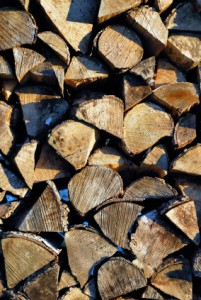 Biomass energy or bioenergy refers to all forms of renewable energy derived from plant materials. Currently about 6% of Canada’s energy is supplied by biomass. (1)
Biomass energy or bioenergy refers to all forms of renewable energy derived from plant materials. Currently about 6% of Canada’s energy is supplied by biomass. (1)
Biomass can come from wood, agricultural crops, and other organic residues like straw, oat hulls and flax shives. It can also come from wood, woodchips, livestock waste, and switchgrass.
On this page, we look at these biomass energy sources and topics:
- Wood
- Pyrolysis
- Biogas
- Incentives
- Biofuels
Click a link in the list above to jump to that topic on this page.
Biomass energy has a number of environmental benefits:
- It is considered “green” energy because it is carbon neutral. Burning wood, for example, will produce no more carbon dioxide than leaving a tree to die and decompose naturally.
- Biomass energy can decrease methane emissions which are given off by anaerobically decaying plant material.
- It is infinitely renewable if the resources are managed sustainably.
Wood
For heating homes, wood burning is the most likely form of biomass energy. Burning wood is one of the oldest of all energy sources.
The technology has advanced in leaps in the last decade with numerous high efficiency options that cut emissions by up to 90 percent and use up to one-third less wood.
Wood can provide both space and water heat in a number of ways.
- Chunk wood or pellets burned in a high efficiency enclosed fireplace, box stove, furnace or cook stove.
- Wood or agricultural residues burned in furnaces to heat water. This water can be pumped and circulated to heat buildings. (2)
Pyrolysis
Pyrolysis produces biochar, liquids and gases by heating biomass in a low or no oxygen environment. The absence of oxygen prevents combustion.
What is produced from pyrolysis varies with temperature:
- 400–500 °C produce more biochar
- above 700 °C produces pyrolysis oil and gas fuel components
Pyrolysis oil
Pyrolysis oil is a liquid fuel that is derived from waste wood and pyrolysis.
Manitoba Hydro has collaborated with Tolko Industries and Ensyn Technologies to develop a Pyrolysis Oil Demonstration Project in The Pas, Manitoba.
The boiler operation at Tolko currently uses wood waste as well as waste oil and bunker C fuel. The boiler produces steam for paper-making in the plant and also to generate half the mill’s electricity.
For the demonstration, Ensyn supplied pyrolysis oil from their processing facility in Renfrew, Ontario to replace fossil fuels at Tolko’s Kraft Paper Mill.
Biochar
Biochar is a solid material that is obtained from pyrolysis.
This 2,000 year-old practice converts agricultural waste into a soil enhancer. Biochar is a fine-grained, highly porous charcoal that helps soils retain nutrients and water. Biochar also improves water quality and quantity by increasing soil retention of nutrients and agrochemicals for plant and crop utilization. More nutrients stay in the soil instead of leaching into groundwater and causing pollution.
The carbon in biochar resists degradation and can hold carbon in soils for hundreds to thousands of years.
The Prairie Biochar Initiative started in 2009 to promote biochar in the Canadian Prairie provinces.
Biogas
On farms, anaerobic digesters or similar technologies have potential to harness methane gas from manure while also displacing fossil fuel energy sources.
See Agriculture solutions/Vehicles and equipment/Biogas.
Biomass incentives
In January 2012, the Manitoba government announced the Manitoba Biomass Energy Support Program (MBESP) to provide grants to encourage coal users to switch to biomass energy products.
The program is also intended to support the expansion and growth of the biomass energy production industry.
Biofuels
There are two key forms of bio-based fuels for vehicles: biodiesel and ethanol. See Alternative fuels in the Transportation solutions area of this website.




